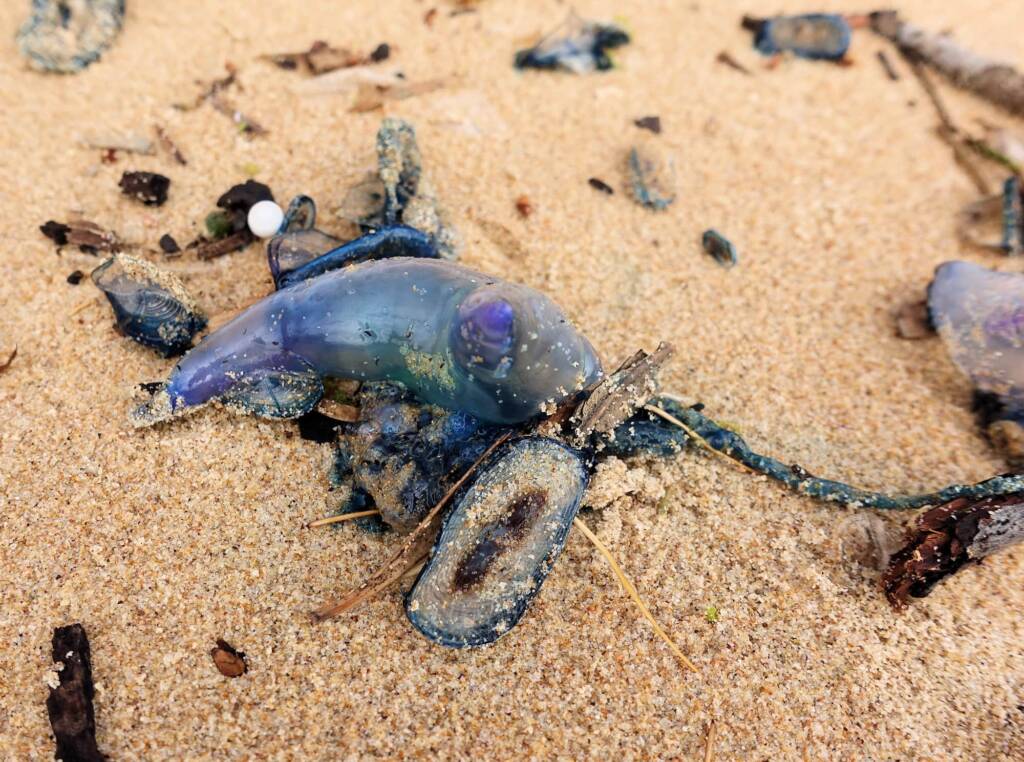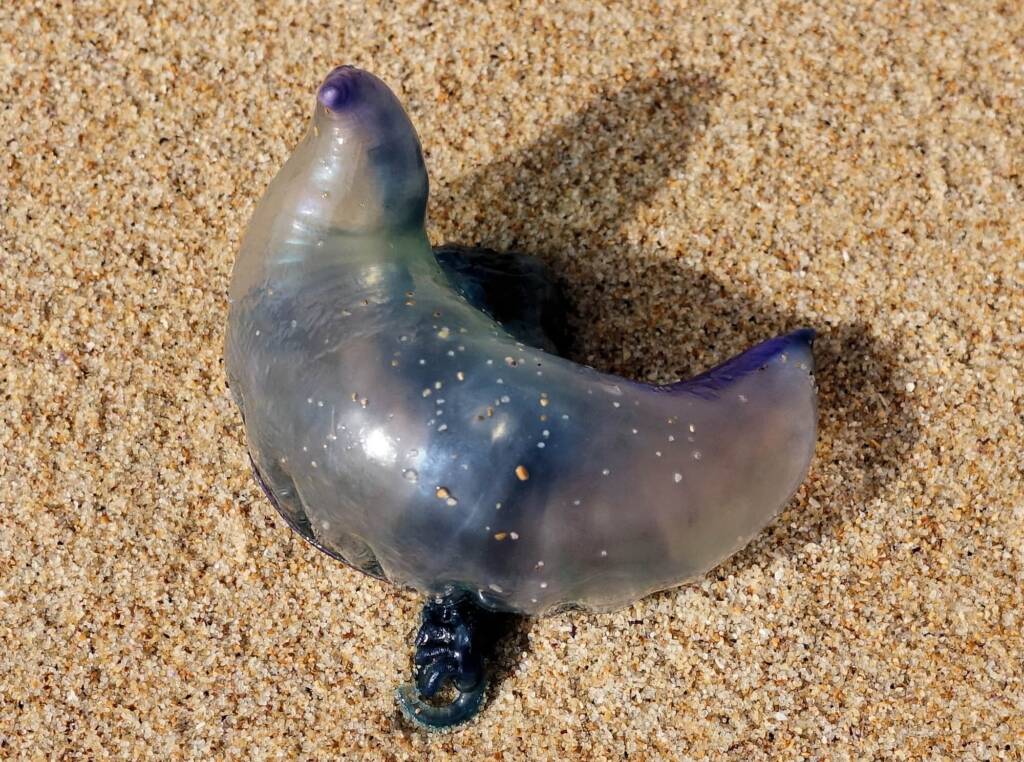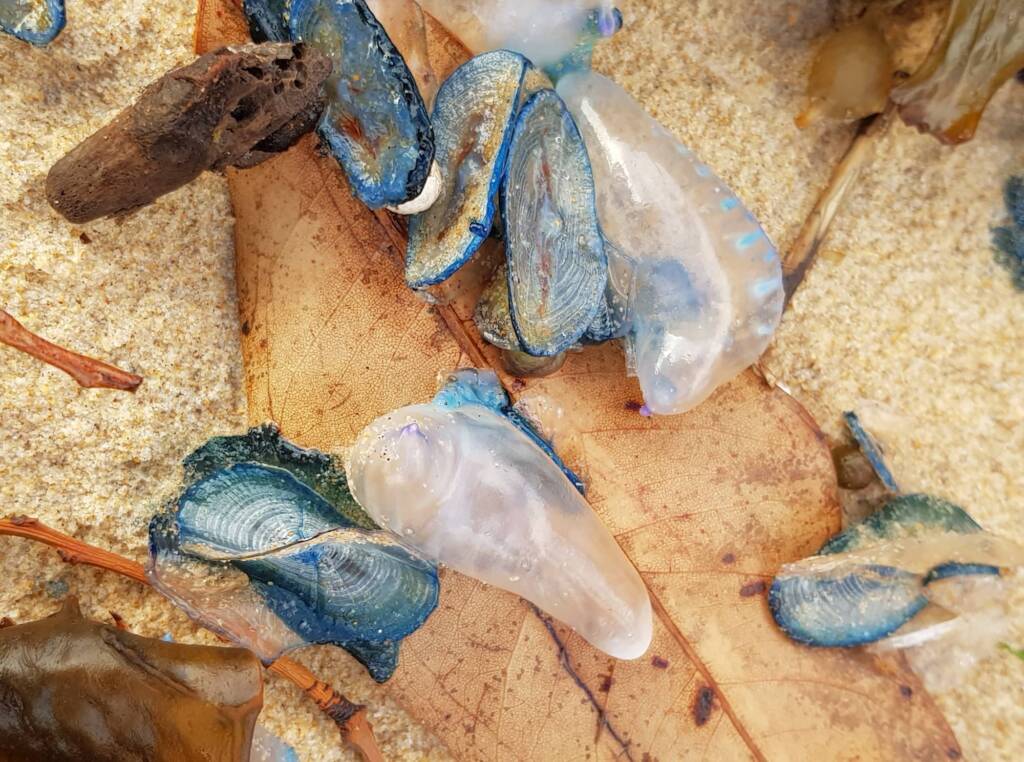Northern Beaches FaunaAustralian Bush Turkey Blue Bottles By-the-wind Sailor Common Brushtail Possum Purple Shore Crab Red-tipped Crab Spider Three-bar Porcupinefish
At certain times of the year, a common sight washed up on the beaches along the east coast and the southern end of the west coast of Western Australia are Bluebottle Jellyfish (Physalia utriculus), also just commonly called Bluebottles or Blue Bottles.
Physalia utriculus is sometimes confused with its larger, more venomous Atlantic cousin, the Physalia physalis (commonly known as the Portuguese Man o’ War). You will also see references to Physalia utriculus as the Pacific Portuguese Man o’ War with Physalia physalis as the Atlantic Portuguese Man o’ War.

Bluebottles have a conspicuous elongate blue float and a long blue tentacle. In Physalia utriculus the float rarely exceeds 10 cm and the tentacle less than 3 metres.
Fleets of bluebottles are carried by warm currents to more temperate waters, where they are blown onshore and can be seen on beaches in autumn and winter. Following are thousands of bluebottles blown ashore after a stormy night.



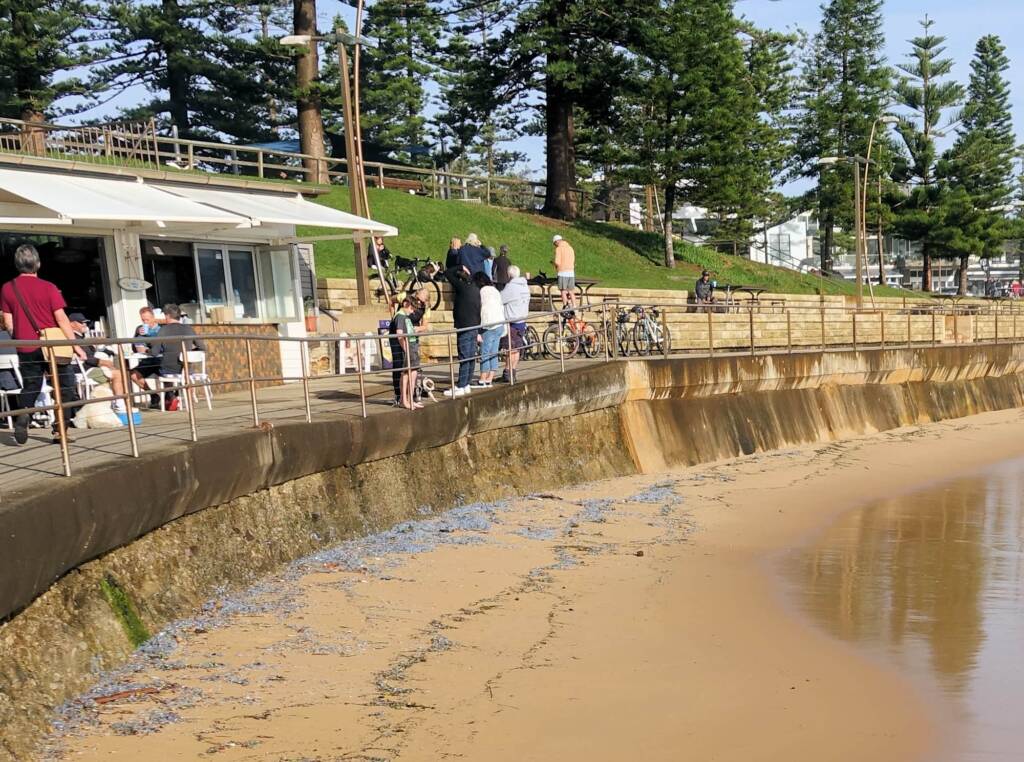
Bluebottles are siphonophores, a group of colonial jellyfish. Siphonophorae are a class of marine organisms within the phylum Cnidaria. Instead of being a single organism like the jellyfish (we commonly recognise), siphonophores are actually made up of several colony members called persons (sometimes also known as “zooids”).
By-the-wind Sailor (Velella velella)
Often seen washed ashore with the Bluebottles are Velella velella (pictured below with the Bluebottles), a monospecific genus of hydrozoa in the Porpitidae family, whose currently only known species is Velella velella. This species is a cosmopolitan free-floating hydrozoan that lives on the surface of the open ocean with the common names of By-The-Wind-Sailor, Sea Raft, Purple Sail, Little Sail, or just Velella.
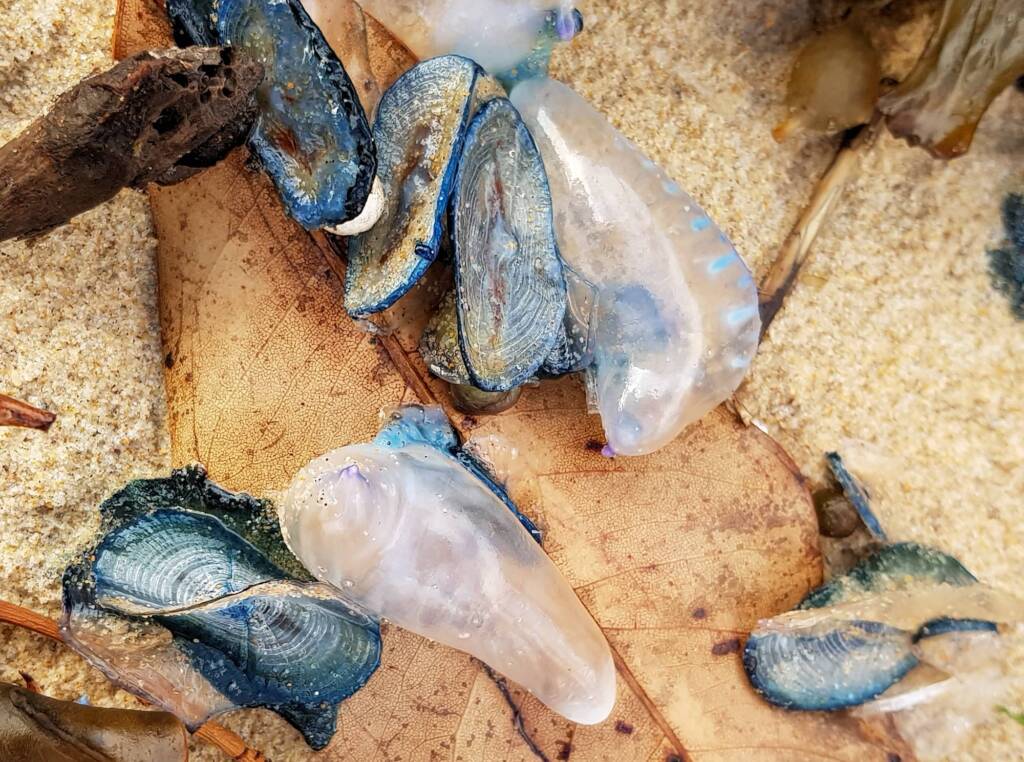
Common name
Bluebottle Jellyfish, Common Bluebottle, Bluebottles, Blue Bottles, Pacific Portuguese Man o’ War (the larger Physalia physalis is known as the Atlantic Portuguese Man o’ War).
A group of bluebottles is called an ‘armada’. This is the Portuguese and Spanish word for a naval fleet.
- Scientific Classification
- Kingdom: Animalia
- Phylum: Cnidaria
- Class: Siphonophora
- Order: Cystonectae
- Family: Physaliidae
- Genus: Physalia
- Species:
- Physalia megalista (Péron & Lesueur, 1807)
- Physalia physalis (Linnaeus, 1758)
- Physalia utriculus (La Martiniéré, 1787)

Footnote & References
- Bluebottle Jellyfish, Australian Museum, https://australian.museum/learn/animals/jellyfish/bluebottle/
- Bluebottle factsheet, Western Australia Museum, https://museum.wa.gov.au/research/research-areas/aquatic-zoology/resources/sea-stinger-factsheets/bluebottles
- The blue bottles are coming, but what exactly are these creatures?, by Lisa-ann Gershwin,21 October 2015, CSIRO, https://ecos.csiro.au/the-blue-bottles-are-coming-but-what-exactly-are-these-creatures/
- The low-down on common bluebottles, by Jennifer Ennion, 21 November 2016, Australian Geographic, https://www.australiangeographic.com.au/topics/wildlife/2016/11/australian-bluebottles/
- Physalia utriculus (La Martiniéré, 1787), Atlas of Living Australia, https://bie.ala.org.au/species/https://biodiversity.org.au/afd/taxa/f0c40591-1d07-4b81-9b0e-426d9a8c2d7f
- Invasion of the strange sailor jellyfish – what are they, and will they sting us?, Author Cathy Lucas, 3 September 2014, The Conversation, https://theconversation.com/invasion-of-the-strange-sailor-jellyfish-what-are-they-and-will-they-sting-us-31131
- Velella velella (Linnaeus, 1758), By-The-Wind-Sailor, Atlas of Living Australia, https://bie.ala.org.au/species/https://biodiversity.org.au/afd/taxa/f170a621-12cf-42ea-b36a-e2c6bf1201f1
Northern Beaches FaunaAustralian Bush Turkey Blue Bottles By-the-wind Sailor Common Brushtail Possum Purple Shore Crab Red-tipped Crab Spider Three-bar Porcupinefish
Northern BeachesNorthern Beaches Fauna Northern Beaches Flora
New South WalesBarunguba Montague Island Bourke Blue Mountains Bundeena Central Coast Kosciuszko National Park Mount Kaputar National Park Lower North Shore Northern Beaches Sapphire Coast Snowy Mountains Region South Coast Stony Range Regional Botanic Garden Sydney



